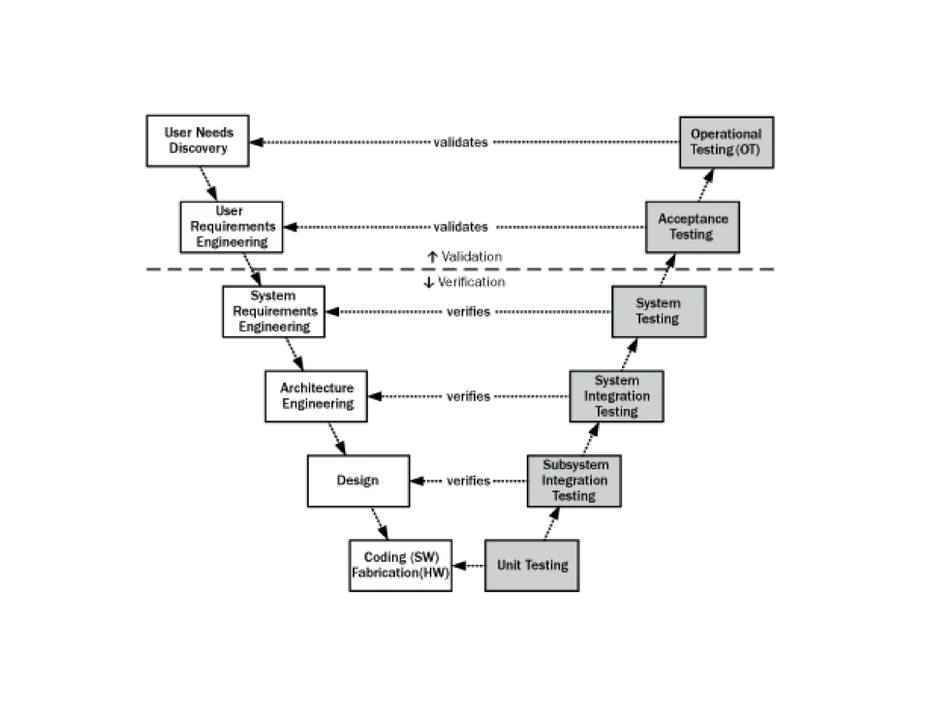Unit 1.3: Verification and Validation: Ensuring Software Excellence
Two intertwined concepts stand as sentinels of quality: verification and validation. These two processes play distinct yet complementary roles in the journey to create reliable and high-quality software applications. Verification ensures that the software is built correctly, adhering to specifications, while validation ensures that the right software is built, meeting user needs and expectations.
Verification: Building the Software Correctly
Verification is the process of confirming whether the software meets the specified requirements and adheres to the design specifications. It involves meticulous review, analysis, and testing of the software at various stages of development. The goal is to identify and rectify defects early in the development cycle, minimizing the likelihood of issues persisting into later phases.
Verification activities encompass code reviews, walkthroughs, inspections, and unit testing. By scrutinizing the code and design, developers and testers ensure that the software's components and functionalities align with the intended outcomes. Verification focuses on accuracy, correctness, and conformance to established standards, validating that the software is built correctly from the ground up.
Validation: Building the Right Software
Validation, on the other hand, shifts the focus to ensuring that the software meets the actual needs and expectations of its users. It involves assessing whether the software accomplishes its intended purpose in real-world scenarios. Validation is a dynamic process that considers user feedback, usability, and functionality.
User acceptance testing (UAT) is a prominent aspect of validation. By involving end users in testing, developers gather insights into how the software performs in real user environments. This process validates that the software addresses user needs and provides a satisfactory experience. Validation ensures that the software aligns with the desired outcomes and offers tangible value to stakeholders.
The V-Model: An Elegant Representation of Verification and Validation
The V-Model, also known as the Validation and Verification Model, presents a visually intuitive representation of the testing process in relation to the development lifecycle. It illustrates the parallelism between the development stages and their corresponding testing phases. Just as development progresses in a linear manner, from requirements to coding and deployment, testing proceeds in a mirrored fashion, ensuring that each development phase is thoroughly validated.
In the V-Model, each development phase is paired with a corresponding testing phase. For instance:
- Requirements gathering is matched with requirements validation.
- System design is linked with system testing, also referred to as end-to-end testing.
- Implementation (coding) coincides with unit testing.
- Integration of components aligns with integration testing.
- Deployment corresponds to acceptance testing.
The V-Model's symmetrical structure underscores the importance of validation at each step, affirming that the software's components and functionalities align with expectations and requirements. This methodology enhances the likelihood of identifying and rectifying defects early in the development process, saving time, effort, and costs.

Source: https://insights.sei.cmu.edu/blog/four-types-of-shift-left-testing/
The Shift-Left Movement and V & V
The shift-left movement in software development has significantly changed the approach to verification and validation (V&V) processes. Shift-left emphasizes the early integration of testing and quality assurance activities in the software development lifecycle, pushing them closer to the beginning of the development process. This shift has several key impacts on V&V:
- Early Detection of Issues: By integrating testing and validation activities at the beginning of the
development process, issues and defects are detected and addressed much earlier. This reduces the likelihood
of critical issues surfacing later in the development cycle, which can be more costly and time-consuming to
fix.
- Reduced Cost of Issue Resolution: Fixing defects early is generally less expensive than fixing them
later in the development process. Shift-left helps minimize the cost of resolving issues, as they are
identified closer to the point of introduction.
- Improved Collaboration: Shift-left encourages closer collaboration between development, testing, and
quality assurance teams. Cross-functional teams work together from the start to establish testing
requirements, testing environments, and quality metrics.
- Continuous Feedback Loops: Continuous integration and continuous delivery (CI/CD) pipelines, which are
central to the shift-left approach, create continuous feedback loops. Teams can quickly test, validate, and
provide feedback on changes, leading to faster iterations and improvement of software quality.
- Test Automation: The shift-left approach emphasizes test automation, allowing for the rapid and
repeatable execution of tests. Automated tests can be integrated into the CI/CD pipeline, enabling faster
feedback on code changes.
- Increased Test Coverage: By starting testing early in the development process, shift-left promotes a
higher level of test coverage. Teams can assess and validate various aspects of the software, such as
functionality, performance, security, and usability, from the beginning.
- Enhanced Risk Management: Shift-left supports proactive risk management by identifying potential issues
and vulnerabilities before they become significant risks. This is particularly important for industries with
strict compliance requirements or high security standards.
- Shorter Time to Market: With faster feedback and early issue detection, software development teams can
release software more quickly, allowing businesses to be more responsive to market demands.
- User-Centric Focus: Shift-left encourages a user-centric approach by involving end users and
stakeholders in the testing and validation process from the outset, leading to software that better meets
user needs and expectations.
- Cultural and Mindset Shift: The shift-left movement is not only a process change but also a cultural
shift in organizations. It promotes a mindset of shared responsibility for software quality among all team
members, not just the testing and QA teams.
Overall, the shift-left movement has transformed V&V practices from being isolated, end-stage activities to being integral components of the entire software development process. This results in higher-quality software, faster delivery, and increased collaboration among cross-functional teams. However, it requires a commitment to cultural change, new tooling, and automation to fully realize the benefits of this approach.
For more information about this important topic check out this blog by Donald Firesmith of Carnegie-Mellon University.
https://insights.sei.cmu.edu/blog/four-types-of-shift-left-testing/
Useful Links: ←Unit 1.2 | Unit 1.4→ | Table of Contents
